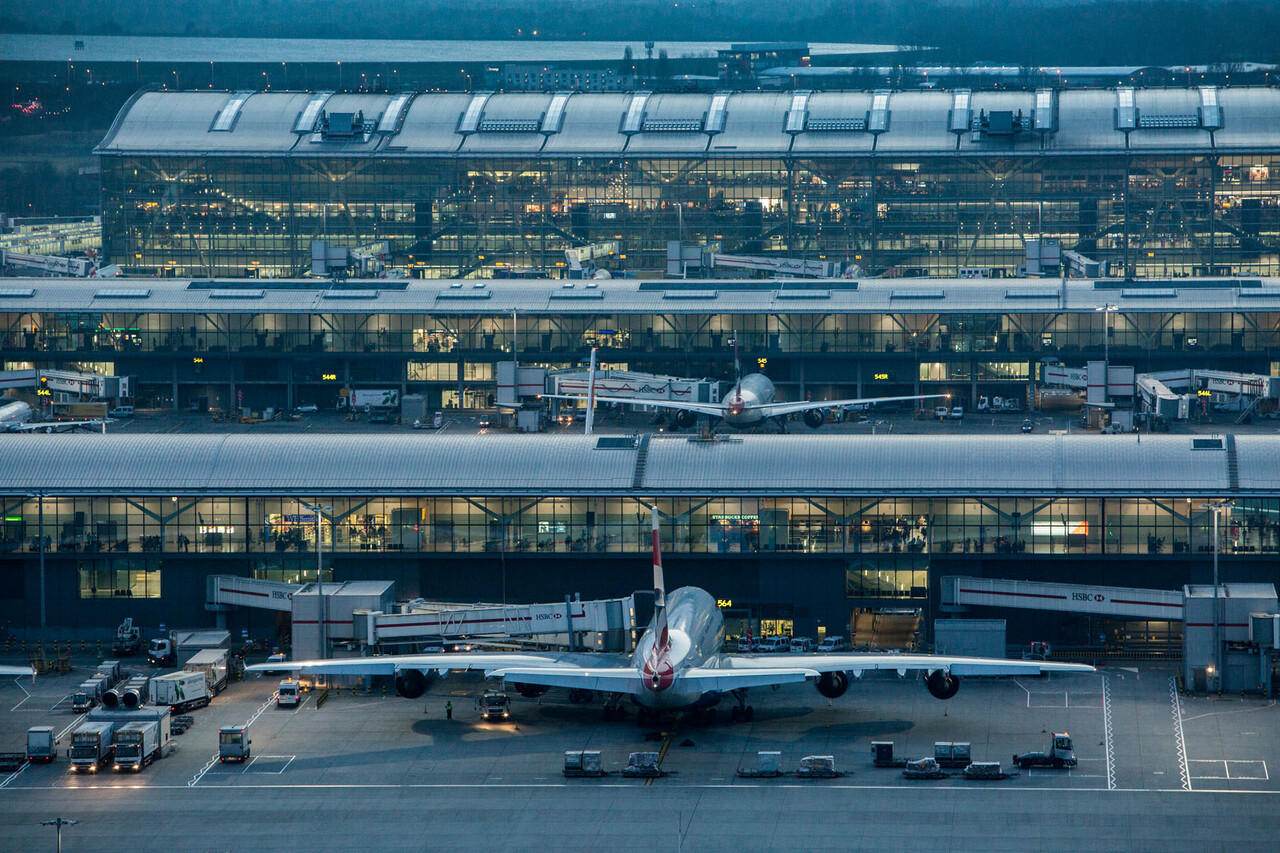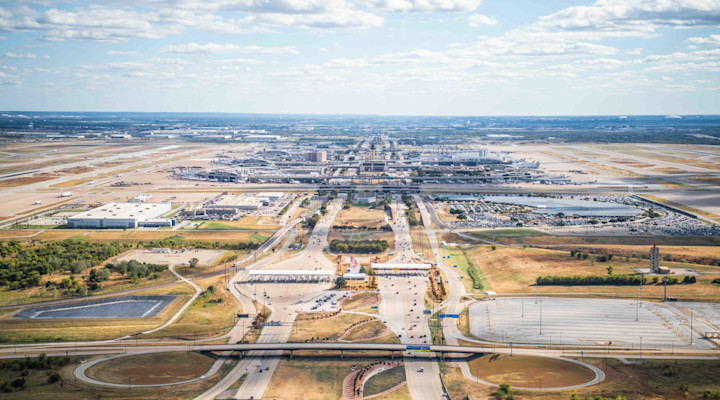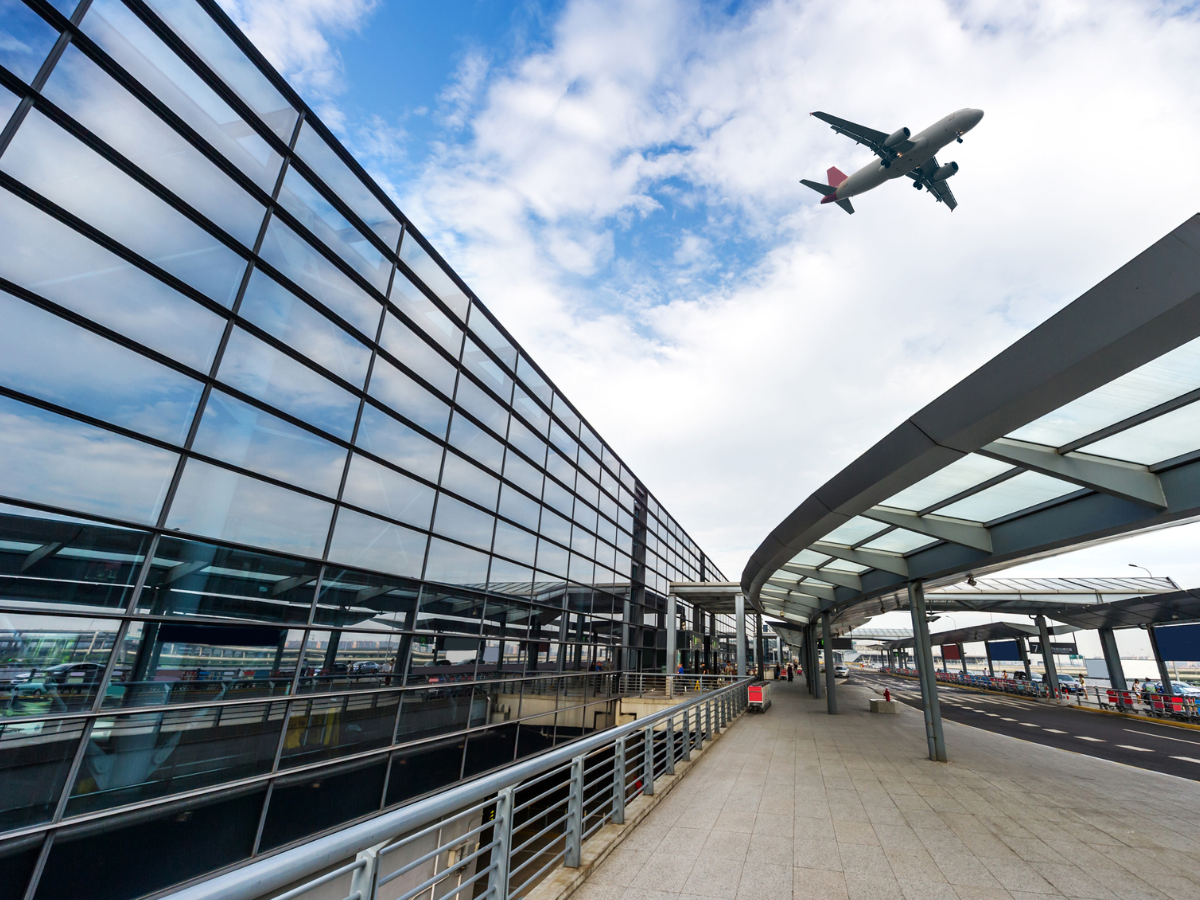The Kelly Review report has been published, reviewing the circumstances that led to the closure of Heathrow Airport on 21 March 2025.
The independent review, led by former Transport Secretary Ruth Kelly, was commissioned by Heathrow Airport Holdings to assess the incident and identify lessons to improve future resilience.

Incident Review
The incident was triggered late on 20 March when a fire broke out at the 275kV National Grid substation at North Hyde, just outside Heathrow’s perimeter in West London. The blaze also affected a nearby 66kV substation operated by Scottish and Southern Electricity Networks (SSEN).
The fire damaged two of the site’s three supergrid transformers, while the third was temporarily rendered inoperable. The loss of supply to one of Heathrow’s main electricity intakes, Intake A, led to the loss of power for critical systems, including terminal lights, traffic signals, baggage systems, and multiple safety systems.
As a result, Heathrow’s leadership made the decision at approximately 01:15 on 21 March to suspend all airport operations until 23:59 that evening, citing safety, security, and border integrity as paramount.
With around 200,000 passengers affected, long-haul flights were diverted globally, and around 200,000 passengers were impacted.
Limited arrivals resumed later that day, with full operations restored by 04:30 on 22 March.
Key Report Findings
The report determines that the decision to shut down the airport was “the only reasonable option” in light of the uncertainty and extent of system failures. The staged reopening was deemed appropriate, although the report suggests that certain terminals could have reopened slightly earlier.
Ruth Kelly and her fellow review committee members praised the airport’s incident response structure, describing it as well-organised, swift, and led by experienced personnel who prioritised passenger and staff safety.
The Rt Hon Ruth Kelly, former Secretary of State for Transport said:The report we’re publishing today provides a detailed account of the events surrounding Heathrow’s preparedness for and response to the North Hyde substation fire in March. I’ve shared its findings and recommendations in full with the Transport Secretary, the CAA and the Chair of the Transport Select Committee.
The evidence confirms that Heathrow made the right decisions in exceptionally difficult circumstances. Whilst the disruption was significant, alternative choices on the day would not have materially changed the outcome. The airport had contingency plans in place, and the report highlights that further planned investment in energy resilience will be key to reducing the impact of any similar events in the future.
The report sets out a number of important recommendations, which Heathrow’s leadership team will now take forward. I would like to thank those who contributed to the inquiry for their transparency and cooperation, and I’m especially grateful to Joan MacNaughton and Mark Brooker for their expertise and support throughout this process.
Concerns Over Power Resilience
While Heathrow had previously considered its three separate National Grid power intakes to offer sufficient resilience, the review found that the airport underestimated the operational consequences of losing one. The internal power network requires more than eight hours to reconfigure, highlighting the complexity of the infrastructure and its limited flexibility.
The report also notes that while no recent proposals to improve power resilience had been rejected, some major upgrade projects had been delayed due to the COVID-19 pandemic. However, the committee concluded that even if these had been implemented on time, they would not have prevented the March outage or its operational impact.
Future Recommendations
The Kelly Review sets out several recommendations aimed at strengthening Heathrow’s ability to respond to future high-impact events:
- A comprehensive review of the airport’s electrical infrastructure, with investments focused on reducing recovery time
- Examination of additional backup power options, including battery storage and expanded generator capacity
- Improved oversight of low-likelihood but high-impact risks across leadership teams
- Early and structured engagement with regulators, airlines, and stakeholders on the case for targeted investment in critical resilience
- The development of standalone utility masterplans independent of broader airport expansion efforts
Heathrow Airport Holdings has indicated it will now work closely with the Civil Aviation Authority (CAA), the Department for Transport, and other key stakeholders to address the review’s recommendations.
Heathrow Chairman Lord Deighton said:The Board would like to thank Ruth Kelly, Joan MacNaughton and Mark Brooker for their diligence in investigating Heathrow’s preparedness for the fire at the North Hyde substation and how the airport subsequently handled its impact. The Kelly Review is thorough with clear recommendations which the management team will be taking forward. This was an unprecedented set of circumstances, but the learnings identified in the Kelly Review will make Heathrow more fit for the future.
Heathrow CEO Thomas Woldbye said:Heathrow exists to serve our passengers and airlines, which made the decision to close the airport in March because of the North Hyde substation fire tough, but necessary. We hope that all our stakeholders understand this was done to protect the safety of passengers and colleagues. We’re truly sorry for the disrupted journeys, and we understand the impact this had on so many of our customers. I would also like to thank our airline and airport partners for their teamwork on the day, which helped us recover quickly and restart operations smoothly. Such collaboration is key to managing complex airport operations.
The Board commissioned the Kelly Review to assess our preparedness and scrutinise our response. The evidence confirms that Heathrow made the right decisions on the day and successfully put safety first without a single injury reported. Investments in energy resilience have been and will continue to be part of our strategy, and our response to this unprecedented incident was effective due to well-drilled procedures. The Review’s recommendations will further strengthen our resilience, and our team is committed to implementing them in full.
We look forward to the final NESO report, which we hope will address key questions for National Grid and SSEN – particularly how this fire could have begun and why all three transformers failed – so that the UK’s energy infrastructure can be made even more resilient.











